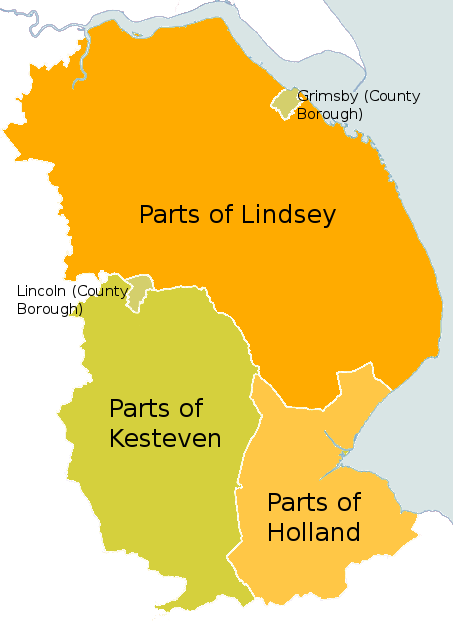|
Parts Of Lincolnshire
The three parts of the English county of Lincolnshire are or were divisions of the second-largest county in England. Similar in nature to the three ridings of Yorkshire, they existed as local government units until commencement of the Local Government Act 1972. The three parts were: * Lindsey in the north, itself traditionally divided into three ridings (North, South and West); * Kesteven in the south-west; and *Holland in the south-east. The three parts touched in a tripoint somewhere near Chapel Hill. Each of the parts had long had separate county administration ( quarter sessions), and each was created a discrete administrative county with its own county council in 1889. This arrangement lasted until 1974, when the three councils were replaced by a single Lincolnshire County Council, with northern Lindsey going to form part of the new County of Humberside (since abolished and replaced south of the Humber with two unitary authorities). Although the parts no longer ex ... [...More Info...] [...Related Items...] OR: [Wikipedia] [Google] [Baidu] |
Lincolnshire Admin Counties 1890-1965
Lincolnshire (abbreviated Lincs.) is a county in the East Midlands of England, with a long coastline on the North Sea to the east. It borders Norfolk to the south-east, Cambridgeshire to the south, Rutland to the south-west, Leicestershire and Nottinghamshire to the west, South Yorkshire to the north-west, and the East Riding of Yorkshire to the north. It also borders Northamptonshire in the south for just , England's shortest county boundary. The county town is Lincoln, where the county council is also based. The ceremonial county of Lincolnshire consists of the non-metropolitan county of Lincolnshire and the area covered by the unitary authorities of North Lincolnshire and North East Lincolnshire. Part of the ceremonial county is in the Yorkshire and the Humber region of England, and most is in the East Midlands region. The county is the second-largest of the English ceremonial counties and one that is predominantly agricultural in land use. The county is fourth-largest o ... [...More Info...] [...Related Items...] OR: [Wikipedia] [Google] [Baidu] |
